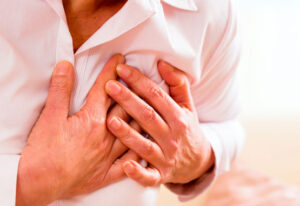Chest pain due to Heart Disease is called Angina. Angina is usually described as a tightness or crushing sensation in the central chest, often spreading to the jaw or left arm. It may be accompanied by sweating or nausea together with a general sense of lack of well-being and a sense of foreboding.
Angina is caused by blockages within the coronary arteries which supply blood, and therefore oxygen to the heart . In this state, when exercise places a demand for more oxygen to the heart muscle, the coronary blood flow just can’t keep up.
Typical angina is brought on by exertion – and goes away with rest.
The diagnosis is confirmed with an Exercise Stress Test – where heart function is monitored by ECG during a walking test on a treadmill.

